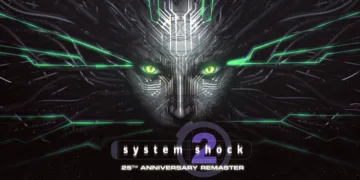Harris Dickinson’s Urchin arrives not as a starched manifesto but as a ragged hymn to life on society’s margins—his feature debut wielding both empathy and disquiet in equal measure. Set against the grimed tapestry of London’s underbelly, it refuses the sanitised pigeonholes of standard social realism (no safe clichés here), instead plumbing the city’s hidden veins where addiction and abandonment coalesce.
At its heart is Mike: a rough-sleeper freshly liberated from a prison cell, clutching a handful of self-help cassettes and a threadbare optimism. He navigates the post-incarceration gauntlet—hostel bed, kitchen shift, tentative bond with a French co-worker—only to find that every foothold in sobriety teeters on the edge of relapse. His arc is simple on paper but fractal in execution: a Sisyphean ascent punctuated by sudden, vertiginous descents.
Visually, Urchin oscillates between hand-held vérité (courtesy of Josée Deshaies) and startling surreal detours—most memorably, a shower-drain odyssey that feels part Jungian dream-scape, part sewer-born nightmare. Frank Dillane, mercurial and unvarnished, embodies Mike’s volatile mix of vulnerability and volatility, anchoring Dickinson’s philosophical inquiry into what it really means to claw one’s way back from oblivion.
Temporal Fractures and Urban Cadence
Urchin’s narrative unfolds like a “chronoslice” of Mike’s life—each scene presented in strict present tense, with no recourse to backstory or flashbacks (a daring choice in an age of origin tales). This relentless immediacy—day bleeds into day—immerses us in his delirious vigilance, as if the film itself is afraid to look away. The fragmented editing amplifies that unease: a fleeting close-up here, a jump-cut there, mimicking the hypervigilant mind of a man perpetually on the brink.
The film opens with drab routines—panhandling on a busy corner, scavenging behind dumpsters, the ritual of queuing for charity soup (London’s invisible poor blinking into focus). Then comes the theft-and-assault: a sudden crescendo of violence that yanks us from observer to participant. Prison arrives as both punishment and intermission, the tone shifting from street-realism to a muted, almost sterile encounter chamber.
Released, Mike stumbles into optimism: hostel bunk, kitchen shift, self-help tapes crackling through earphones. But the mid-point restorative-justice meeting (a scene of uncanny quiet) lays bare the chasm between contrition and comprehension. Enter Andrea—hope draped in a converted van—only to see their fledgling connection corrode under old habits.
Scenes alternate between languid, observational vignettes—lost figures illuminated by streetlamps—and bursts of brutal kinetic energy: a brawl in a dim alley, a synth-pop-fueled party whirl (because even in descent, there’s a twisted grace). Surreal sequences—like the shower-drain odyssey—punctuate the narrative, offering brief metaphysical breathers before crashing back into grim reality.
The pacing is both patient and mercurial, much like Mike himself. One moment you’re lulled by the city’s ambient hum, the next you’re jolted by a frantic camera whip—London as both cradle and crucible.
Faces of Fracture and Flight
Frank Dillane’s Mike is less a character than a lived dossier of human fragility—his undernourished frame and twitchy gestures evoking both the ragged aftermath of five years on the streets and the skeletal residue of hope (he’s a “squalid phoenix,” if you will). In moments of fragile optimism—an almost boyish grin, a tentative nod to self-help cassettes—Dillane radiates mercurial charm. Seconds later, the veneer shatters: snarling desperation, eyes darting like a cornered animal. It’s a performance of paradoxes, teetering between sincere remorse and calculated compliance (is he contrite, or merely auditioning for mercy?).
Harris Dickinson’s Nathan, in cameo guise, serves as Mike’s shadow-self—a foil who embodies everything Mike could have been with slightly more luck (or slightly less self-destruction). Their brief confrontations carry the weight of historical duels: Levellers versus Loyalists, each man baring his moral scars. Megan Northam’s Andrea offers the cool pragmatism of a post-war planner, her caravan a portable utopia. She is both architect of possibility and unwitting enabler, her kindness a double-edged blueprint for Mike’s relapse.
Even the probation officer and counselor become characters in a bureaucratic ballet, their clipped tones and clipped notes underscoring the subtle power dynamics of a system that oscillates between savior complex and cold detachment (think Dickensian workhouses with Wi-Fi). Mike’s fleeting acts of contrition—received with rubber-stamp empathy—feel both genuine and performative.
On a psychological level, Dickinson teases out hints of bipolar swings and childhood trauma without handing us a diagnostic placard. The recurring visions of a reproachful maternal figure and a moss-clad cave function as psychic portals—windows into an inner landscape scarred by abandonment. These images suggest that Mike’s true prison is not steel bars but an echo chamber of memory and desire, where every attempt at salvation ricochets back as relapse.
Lens of Desolation and Dream
Urchin’s visual grammar speaks in whispers and jolts. The hand-held, documentary textures—camera bobbing through alleyways and beneath overpasses—forge a sense of visceral alienation (think British kitchen-sink meets French New Wave vérité). Mike is both hyper-visible and erased, squeezed out of the frame as passers-by glance through him. Natural light spills across littered streets; in the hostel and prison, it gives way to harsh fluorescents and clinical shadows—an optical metaphor for the narrow corridor between freedom and confinement.
Intimate close-ups on Dillane’s face function like psychological X-rays. Every twitch, every flicker of the eye becomes a syllable in Mike’s fractured inner monologue. Then the frame suddenly expands into widescreen cityscapes—London rendered as monolithic cathedral and industrial machine alike—underscoring his diminutive presence in a metropolis that baptizes and abandons him in equal measure.
And just when you’ve settled into social-realist mode, Dickinson punctuates with surreal detours. The shower-drain odyssey, spiraling downward in one continuous take, feels like a post-industrial descent into Dante’s ninth circle—or the gullet of addiction itself. Vision sequences break free into chromatic dream-fields: saturated reds and violets swirl around Mike as if his subconscious were staging its own Mayakovsky-style manifesto.
The production design leans into authenticity. Real streets, improvised storefronts, and non-actors forging an unseen urban chorus lend the film a “found-footage” credibility. Then, in institutional spaces—the probation office, the prison intake area—the sterile minimalism feels almost antiseptic. It’s a study in contrasts: the city’s grime versus the system’s sleek indifference. Within these juxtapositions, Urchin’s cinematography becomes more than style—it’s a socio-visual critique of invisibility and survival, shot one jittery frame at a time.
Echoes of Oblivion and Agency
Urchin posits addiction as a Möbius loop—each relapse seamlessly folds back into a fresh pledge of sobriety. Mike’s narrative is structured in recursive beats: job, romance, high; crash, jail, repeat. It’s less a story than a hypnotic mantra of self-sabotage, evoking centuries of writers (Camus’s Sisyphus comes to mind) who mapped the human impulse to embrace repetition even when it kills us.
Visibility and invisibility intertwine like plague and cure. On London’s streets, Mike is both marquee and mirage—shoved aside by traffic and yet framed in portrait‐style close-ups (the camera’s complicity in “looking away” recalls Dorothea Lange’s Depression-era photographs, stopped time intended to provoke empathy, yet often met with indifference).
No flashbacks. No dossier. This present-only approach functions as erasure-as-survival. Mike has scrubbed his past clean—an anti-biopic stance that challenges our hunger for origin stories. His inner crypt is hinted at by visions: a reproachful mother in storm-lit shafts, a mossy cave that feels half-mythical. Those images aren’t mere flights of fancy but existential waypoints—suggesting that the deepest prisons are forged in memory’s shadow (a thematic sibling to Tarkovsky’s insistence on memory as both sanctuary and cell).
Redemption and accountability spar in the restorative-justice scene, where forgiveness hangs in the air like an unsolicited invitation. Is Mike truly contrite, or merely rehearsing remorse? The system’s cold choreography—probation officer, counselor, rubber-stamp empathy—leans as much toward entrapment as it does aid. In that room, the line between rehabilitation and performance blurs, and Dickinson invites us to question whether social structures ever free us or simply rebrand our cages.
Sonic Realism and Musical Irony
Urchin’s sound design operates like a dual-lane motorway—one lane thunders with driving techno, the other hums with ambient city din. In high-tension moments—the alley brawl, the chase on damp pavement—the pounding beats feel less like a score and more like an auditory fist to the psyche (industrial revolution meets rave culture, anyone?). Meanwhile, traffic roar, half-heard street preachers declaiming salvation, and distant sirens weave a “sonic realism” that roots Mike’s world in relentless immediacy.
When the film cuts to karaoke night, Atomic Kitten’s “Whole Again” unfolds as collective therapy: its saccharine melody undercut by the rawness of ragtag voices. It’s a Greek-chorus-of-the-margins moment—comic, poignant, absurd. Later, the ’80s French synth-pop of “Voyage Voyage” propels Mike and Andrea through neon-lit streets, a cross-cultural soundtrack that flirts with freedom even as it hints at escapist delusion.
Conversely, the film knows the power of silence. In the prison intake and late-night hostel scenes, quiet lands like a weight. It’s an aural blank canvas where Mike’s unspoken dread screams.
And then there are the self-help cassette prompts—voice-over injections of bland optimism (“You’re in the driver’s seat…”) that land with ironic thuds. Mike’s skepticism in the face of these canned platitudes is a small rebellion: even hope can become white noise.
Ripples Beyond the Street
Mike lingers in the mind like a scar—his ragged odyssey emblematic of systemic failure and stubborn individuality (how often do we mistake cruelty for inevitability?). Urchin marries empathy with unflinching honesty, refusing to sentimentalize suffering while still rooting for its protagonist’s fleeting triumphs.
For Dickinson, this debut is a manifesto in motion: a promise that his auteurial voice will continue probing society’s fissures with equal parts compassion and rigor.
And for viewers, Urchin is a dare: to find humanity in those we’d rather overlook, to sit with ambiguity instead of demanding tidy resolutions. Its unresolved final image isn’t a flaw but an invitation—to carry Mike’s world forward in our own, chipping away at indifference one conscience at a time. Urchin premiered on May 17, 2025, in the Un Certain Regard section at the Cannes Film Festival.
Full Credits
Director: Harris Dickinson
Writer: Harris Dickinson
Producers: Archie Pearch, Scott O’Donnell
Executive Producers: Ama Ampadu, Alexandra Tynion, Olivia Tyson, Eva Yates
Cast: Frank Dillane, Megan Northam, Amr Waked, Karyna Khymchuk, Shonagh Marie, Harris Dickinson
Director of Photography (Cinematographer): Josée Deshaies
Editor: Rafael Torres Calderón
Composer: Alan Myson
The Review
Urchin
Urchin is a raw, unflinching character study that marries brutal social realism with moments of lyrical surrealism, anchored by Frank Dillane’s riveting performance and Dickinson’s bold directorial vision. It reframes homelessness and addiction with philosophical depth, leaving viewers unsettled yet profoundly moved.
PROS
- Frank Dillane delivers a raw, magnetic portrayal of Mike’s tortured humanity.
- Josée Deshaies’s hand-held cinematography captures London’s grit and isolation.
- Narrative’s present-tense, episodic structure immerses you in Mike’s psyche.
- Surreal detours (the shower-drain sequence, subconscious visions) add poetic depth.
- Sound design—street ambiance, techno bursts, ironic karaoke—heightens emotional stakes.
CONS
- Fragmented pacing can feel uneven in quieter stretches.
- Surreal interludes occasionally disrupt the film’s social-realist momentum.
- Lack of explicit backstory may frustrate viewers craving context.
- Downbeat ending risks leaving some audiences emotionally adrift.
- Tonal shifts between documentary style and heightened fantasy sometimes clash.
















































